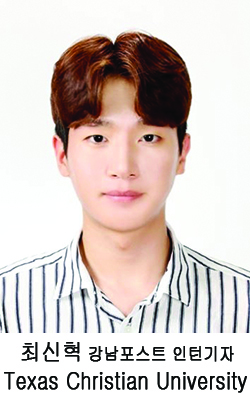 |
삼성전자가 글로벌 1위를 목표한 ‘반도체 비전 2030’ 달성을 위해 인공지능(AI) 산업의 핵심인 NPU(Neural Processing Unit-신경망처리장치) 기술 개발에 본격 나섰다. 삼성전자 시스템LSI 사업부장인 강인엽 사장은 지난 6월 18일 서울 태평로 빌딩에서 열린 기자간담회에서 “AI 생태계의 핵심인 NPU 생태계는 아직 기업 간 기술수준을 비교할 만한 수준이 아닌 (초기) 단계”라며 “관련 사업을 선점해 시스템 반도체 1위를 달성하겠다”고 밝히고, “순차적으로 NPU 탑재확대를 강화할 것”이라며 밝혔다.
뒤이어 삼성전자 종합기술원 황성우 부원장은 "NPU의 장점은 온디바이스 AI (On-Device AI)구현 유형성과 수집된 데이터를 클라우드로 보내지 않고 기기 자체에서 처리할 수 있는 기능과 개인정보 보호 그리고 최적한 응답속도 및 전력 소모"라며, NPU가 왜 인공지능(AI) 반도체 시장의 핵심이 되고 있는지를 설명했다. NPU는‘인공 뉴럴’네트워크를 구현하기 위해 인공지능의 핵심인 딥러닝(Deep Learning) 알고리즘 연산을 적용한 프로세서 유닛(신경망 처리 장치)이다. 2010년 퀄컴(Qualcomm)이 처음으로 소개한 이 인공지능 칩은 인간의 뇌 신경망을 모방해‘스스로 판단하는 능력’을 갖추고 있다. 특히, 사람의 뇌에 있는 뉴런처럼 수많은 코어를 활용한 NPU는 동시에 다양한 대용량 데이터를 처리 및 분석을 할 수 있는 스마트한 기능을 포함하고 있다.
삼성전자는 2012년부터 시스템 LSI사업부와 종합기술원을 동원해 미래 AI시장에 주도권이 될 ‘차세대 NPU 기술’개발을 지속해 오고 있었다.그 첫 실적물로는 올해 공개된 갤럭시 S10에 최초로 NPU를 탑재한 신형 모바일 프로세서 엑시노스 9820가 있다. 전작 엑시노스 9810 모델에 비해 인공지능 연산능력이 약 7배, 코어 성능은 약 20%, 전력효율은 40% 향상됐다.
특히 NPU의 활용도는 카메라 성능 업그레이드에서 비중이 컸다. 삼성전자는 이번 업그레이드를 통해 그동안‘축적한 디스플레이, 카메라 기술을 바탕으로 차별화된 디자인과 기능을 선보였으며, 촬영할 때에 피사체의 형태?장소/주변 밝기 등 환경을 순간적으로 감지하고, 최적 값을 자동적으로 설정함으로써 최상의 이미지와 영상화질 향상을 재조명했다.
삼성전자는 향후 NPU가 스마트폰에만 적용되는 것뿐만 아니라 자율주행차를 포함해 IT 전분야의 IoT와 SoC (System on Chip)에 활용되어 사업 범위를 넓힐 인공지능 칩이라 확신했다. 이에 황성우 부원장은 "2025년에는 자유 대화형 음성비서 등이 가능하며 2030년 이후에는 사람과 같이 행동하는‘휴머노이드’도 나올 수 있을 것"이라고 전망했다.
NPU 반도체 시장 선점을 위해 현재 삼성전자는 200여 명의 인력을 2030년까지 10배 이상으로 확대할 계획이며, IT 개발자 인재확보 및 글로벌 연구 기관 협력에 집중한다는 도약을 선보였다.
한편 삼성전자는 지난 5월 세계적 석학인 요슈아벤지오(YoshuaBengio) 교수를 중심으로 몬트리올대(University of Montreal), 맥길대(McGill University) 연구진과 개발자 등과의 협력을 시작했으며, 딥러닝 전문 연구 확장을 위해 캐나다 밀라연구소와 결합했다. 또한 2017년부터 뉴럴프로세싱연구센터(NPRC, Neural Processing Research Center)와 연합해 국내 대학들과의 지속 협력을 추진함으로써‘반도체 비전 2030’ 달성에 전력 투구하고 있다.
Samsung Electronics Accelerating ‘Semiconductor Vision 2030’
Samsung Electronics, a predominant leader in system-semiconductor technologies, has revealed their plan to develop a neural processing unit (NPU), a new core of artificialIntelligence (AI) industry, in pursuit of reaching ‘Semiconductor Vision 2030’ goal. Earlier, Samsung Electronics held a briefing on the NPU project at Seoul Taepyung-ro Building on June 18. “The NPU, the core of the AI ecosystem, is not yet at the level of comparable technology levels between rival companies. But we will gradually preoccupy the market by becoming No. 1 in advanced system semiconductor,” said Kang In-yeop, president of company’s System LSI Division.
Subsequently Hwang Sung-woo, the vice chairman of Samsung Advanced Institute of Technology, explained why NPU is the core of AI market. “The great advantages,”he said, “include the flexible On-Device AI implementation, the ability to process the collected data on the device itself without sending it to the cloud, privacy, and optimal response time plus low power consumption”.
The NPU is an AI-based processor unit functioning by ‘Deep Learning’ algorithm computation that is to ultimately implement in ‘neural network’ processing device. First introduced by Qualcomm in 2010, NPU is known as a human brain-like AI chip and has the ability to judge on its own. Particularly, utilizing many cores like neurons in the human brain, NPU contains smart features that can process and analyze a large amount of data ‘simultaneously’.
Since 2012, Samsung Electronics has been in progress of developing primary NPU technology through the collaboration of System LSI Division and Advanced Institute of Technology. The first NPU equipped outcome was the new mobile processor Exynos 9 (9820) which was implemented in Galaxy S10 this year. Compared to the previous Exynos 9810 model, this NPU equipped model has proven the substantial enhancement such as 7 times at computing power, 20% at core performance, and 40% at power efficiency.
Especially the utilization of NPU made a great contribution on camera performance upgrade. Samsung Electronics has unveiled ‘different design and function based on accumulated display and camera technology’ through this upgrade. When shooting, the camera instantly detects the 'environment such as the shape, location, and surrounding brightness' of the subject, and automatically fixes the optimum value to produce the best image and image quality.
Samsung Electronics was convinced that NPU will not only be applied to smartphones but also artificial intelligence chips that will be used in all areas of IT such as in IoT (Internet on Things) and SoC (System on Chip) including autonomous vehicles. "We will be able to have a free interactive voice assistant in 2025 andin 2030possibly humanoid that will behave like a human,”said Hwang Sung-woo.
In order to dominate the NPU semiconductor market in advance, Samsung Electronicsplans to create over 2,000 high-caliber talent worldwide by 2030, which is about 10 times the current headcount,concentrating on securement of IT developer talent and cooperation with global research institutes.
Meanwhile in May, Samsung Electronics began collaborating with researchers and developers at the Montreal University and McGill University, including world-renowned researcher Professor YoshuaBengio. And they combined concerted operation with Canadian Mila Research Institute for specializing ‘Deep Learning’. Furthermore, since 2017, the company has been running full power to achieve ‘Semiconductor Vision 2030’ by partnering with the Neural Processing Research Center (NPRC) and promoting continuous cooperation with domestic universities.
최신혁 강남포스트 인턴기자 webmaster@ignnews.kr
<저작권자 © 강남포스트, 무단 전재 및 재배포 금지>

 (재)강남문화재단, 타 기관과 교류·협력 협약 체결 활발
(재)강남문화재단, 타 기관과 교류·협력 협약 체결 활발


